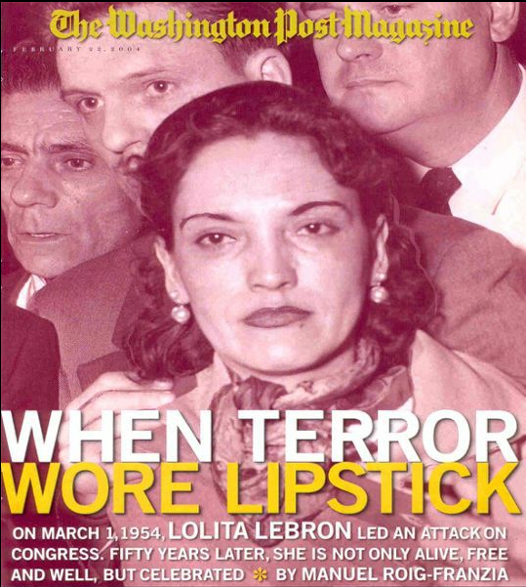“‘Marcos’ final speech is a puzzle: ‘he who has never lived does not die’ undoes ‘he who does not exist and never existed.’ Dead, not dead, not not dead. But how, he asks, ‘do you kill what was never alive?’ How, in other words, can you kill the Marcos meme? You can’t” (Taylor). In THE DEATH OF A POLITICAL “I:” THE SUBCOMANDANTE IS DEAD, LONG LIVE THE SUBCOMANDANTE!, there is a conversation of reincarnation of figures and what people/bodies can see but furthermore represent, especially in regards to zapatisma.
The quote above is similar to Dolores “Lolita” Lebrón manifesto. “Yo no vine a matar. Yo vine a morir.” Her autonomy exists in her ability to claim death, to exist through the lens of death, because she is not in control of liveness, hers and definitely not others. The colonized female embracing death as a practice of agency is radical, but also all that is left for her to claim. The life of the body is given to the colonizer, but death is given to the colonized. This is similar to the final speech of Marco. One is immortal because life is never granted to those who are seen “dead” by a society, those who are in control of their own death but not their own existence/life.

This quote from Our Word is Our Weapon stood out to me in regards to what being a woman and being a zapatista is. “She. Has no military rank, no uniform, no weapon. Only she knows she is a Zapatista. Much like the Zapatistas, she has no face or name. She struggles for democracy, liberty, and justice, just like the Zapatistas…she is a part of the amorphous yet solid part of society that says, day after day, ‘Enough is enough!'”(De Leon 38). A woman of color is a metaphysical dilemma that is fighting between life and death, existence and visibility, agency and identity. The Zapatista is no longer a name carried by man, but an ideology that has been long before carried by women of color.